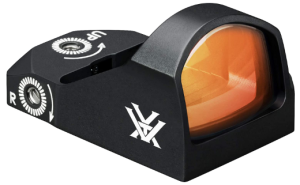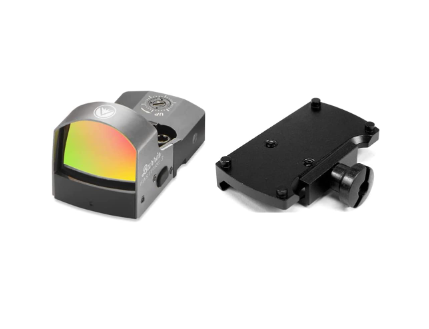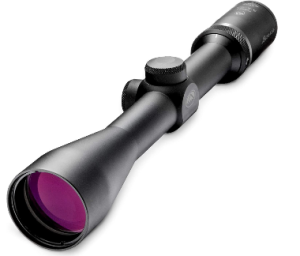Are you wondering what range are red dots good for? In this article, we will explore the effective range of red dot sights and delve into the factors that influence their performance.
Red dot sights are popular among shooters in the realm of firearms and in the world of airsoft and other shooting sports. These compact and lightweight optics provide a simple and intuitive aiming solution, making them a favorite choice for many enthusiasts.
What Range Are Red Dots Good For?
Before we delve into the effective range of red dot sights, let’s first understand how they work. Red dot sights are also known as reflex sights. These sights use a combination of lenses, mirrors, and light-emitting diodes (LEDs) to create a reticle that appears as a red dot or a similar illuminated shape.
Unlike traditional iron sights, which require the shooter to align multiple elements, red dot sights allow for faster target acquisition and improved accuracy.
How Far are Red Dots Good For?

When it comes to firearms, red dot sights are commonly used on handguns, shotguns, and rifles. The effective range of a red dot sight on a firearm can vary depending on factors such as the shooter’s skill level, the size of the dot, and the type of firearm being used.
For handguns, which are typically used at relatively close distances, red dot sights are highly effective within typical self-defense ranges. These sights excel in scenarios where quick target acquisition and engagement are crucial. Red dot sights on handguns are generally effective up to 50 yards (45 meters).
Red dot sights can enhance target acquisition and tracking when mounted on shotguns, especially when engaging moving targets. They are particularly popular in competitive shooting disciplines such as 3-gun competitions. For shotguns, red dot sights are effective within ranges similar to handguns.
You can also use red dots on rifles for various applications, including close-quarters combat, hunting, and target shooting. The effective range of a red dot sight on a rifle can extend beyond that of handguns and shotguns, reaching distances of 100 yards (91 meters), depending on the shooter’s skill and the specific red dot sight being used.
Is a Red Dot Sight Better than a Scope?
Red dot sights and scopes have unique advantages and are designed for different shooting scenarios.Red dot sights are popular for close to mid-range engagements, quick target acquisition, and fast-paced shooting disciplines. On the other hand, scopes are well-suited for precise long-range shooting, target identification, and applications that benefit from magnification.
In some cases, shooters opt for a combination of both optics. Some manufacturers offer magnifiers that can be mounted behind a red dot sight, providing the ability to switch between a non-magnified red dot and a magnified setup as needed.
Advantages Red Dot Sights
Speed and Target Acquisition
Red dot sights excel in scenarios where quick target acquisition is crucial. The illuminated dot allows shooters to acquire the target rapidly, especially in close-quarters engagements or fast-paced shooting disciplines.
Parallax-Free
Red dot sights are parallax-free. This means that the position of the shooter’s eye does not affect the alignment of the reticle on the target. This makes them more forgiving regarding the head position and eye relief than scopes.
Wide Field of View
Red dot sights offer a wide field of view, allowing shooters to maintain situational awareness and easily track moving targets. This is particularly beneficial in dynamic shooting scenarios.
Unlimited Eye Relief
Red dot sights provide unlimited eye relief. This means the shooter can maintain a comfortable shooting position without worrying about precise eye placement. This is especially important for shooters who prefer shooting with both eyes open.
See Also: Best Red Dot with Unlimited Eye Relief
Cons of Red Dot Sights
Lack of Magnification
Red dot sights do not provide magnification, limiting their effectiveness for long-range shooting or target identification at extended distances.
Limited Precision
While red dot sights offer quick target acquisition, the dot size will limit precision. This is especially true when engaging smaller targets or aiming for tight-shot groups.
Advantages of Scopes
Magnification
One of the primary advantages of scopes is their ability to provide magnification, allowing shooters to see targets at greater distances and make precise shots. This is particularly useful for hunting, long-range shooting, and target identification.
Reticle Options
Scopes offer various reticle options, including traditional crosshairs, BDC (Bullet Drop Compensation), and Mil-Dot reticles. These reticles can provide additional aiming points or compensation for bullet drop, windage, and range estimation.
Precision
Due to the magnification factor, scopes generally provide finer aiming points, especially at longer ranges. This allows for more precise shot placement and can benefit shooters engaging small targets or aiming for tight shot groups.
Low Light Performance
Scopes with larger objective lenses can gather more light, improving visibility in low-light conditions. This can be advantageous during dawn or dusk or shooting in dense vegetation.
Cons of Scopes
Limited Field of View
Scopes generally offer a narrower view field than red dot sights. This reduced field of view may limit situational awareness and make it challenging to track fast-moving targets.
Restricted Eye Relief
Scopes have specific eye relief requirements, meaning the shooter must maintain a precise distance from the scope to achieve a full, clear-sight picture. This can be restrictive and uncomfortable for shooters who prefer a more flexible shooting position.
Increased Weight and Size
Scopes are typically bulkier and heavier than red dot sights. This extra weight and size can affect the balance and maneuverability of the firearm, particularly in dynamic shooting scenarios or when weight is a concern.



